
Okay, gearheads, prepare yourselves for a journey into the often-overlooked, yet utterly pivotal, component of every car: the steering wheel. It’s that familiar circle, or sometimes not-so-circular object, that you grip every time you embark on an automotive adventure. For most, it’s just a functional necessity, a simple means to an end, guiding your chariot through the concrete jungle or across winding country roads. But for us petrolheads, and crucially, for the visionary designers who dared to dream differently, the steering wheel is so much more. It’s a canvas, a control panel, a statement of intent, and sometimes, a piece of pure, unadulterated automotive art.
Throughout history, countless automakers have approached the steering wheel with varying degrees of ambition. Some have stuck to the tried and true, prioritizing pure practicality and robust functionality, ensuring a reliable connection between driver and machine. Others, bless their brave souls, have thrown the rulebook out the window entirely. They’ve integrated functions galore, experimented with wildly unconventional shapes, and crafted masterpieces from luxurious and exotic materials, all in the pursuit of making their vehicles distinctive, intuitive, and frankly, just plain cool. These are the unsung heroes of interior design, the wheels that dared to go against the grain, pushing boundaries and sparking conversations that continue to this day.
So, buckle up, because we’re about to put our hands on ten of the most audacious, innovative, and downright coolest steering wheels that have ever graced the automotive world. These aren’t just mere interfaces; they’re declarations of design philosophy, fascinating experiments in ergonomics, and sometimes, even prophecies of what driving could be in the decades to come. From concept cars that burned brightly before fading into legend, to production models that pushed the envelope of what was commercially viable, these are the steering wheels that truly ventured far outside of the norm. Let’s get cracking and celebrate the sheer brilliance of these automotive marvels!

1. **Maserati Boomerang**Imagine yourself in the early 1970s, a vibrant era when automotive design was undergoing a radical transformation, wholeheartedly embracing sharp angles and futuristic wedge shapes. Then, picture the 1972 Geneva Motor Show, a stage where Maserati unveiled something truly breathtaking: the Boomerang concept. This wasn’t just another pretty face; it was a captivating vision of the future, a stunning embodiment of the wedge car design philosophy that would also come to define later icons like the Lamborghini Countach. And beneath its captivating, razor-sharp exterior, residing on a Maserati Bora chassis and propelled by a rather glorious 4.8L OHC V8 at the rear, lay an interior that continued this futuristic ballet of form and function, a seamless blend of opulent luxury and modern convenience.
But it’s not the exterior that we’re here to gush about today, as magnificent and historically significant as it is. Our focus, naturally, is on its most peculiar and utterly brilliant design element: the steering wheel, or perhaps more accurately, the entire driver’s control pod. This wasn’t merely a conventional steering wheel; it was a bona fide command center, a beautifully integrated sculpture that ingeniously housed not only the steering wheel itself but also all the car’s essential gauges and a host of accessory controls. Imagine every vital piece of information, every switch, every lever – even the humble turn signals and wiper stalks – all cleverly tucked within the circumference of the steering wheel. It truly was an ergonomic marvel, creating a cockpit environment that felt like it had been lifted straight from a sci-fi flick.
The design philosophy here was about putting everything within immediate reach, reducing the need for drivers to avert their eyes from the road or stretch to reach controls. The central focal point of this magnificent cluster was a large tachometer, proudly taking center stage, while other engine gauges formed a graceful arc above it, presenting a clear and concise display of the vehicle’s vital signs. It’s a genuine crying shame that the Boomerang remained a singular, one-off concept, never actually intended for the rigors of mass production. Yet, its legacy endures as a powerful testament to imaginative design. Fortunately for us enthusiasts, this singular masterpiece still exists, occasionally gracing prestigious auto shows across Europe, offering us precious opportunities to gawk and marvel at this strange and beautiful machine.
Read more about: Don’t Fall for the Hype: The 15 Cars That Look Absolutely Stunning But Drive Terribly
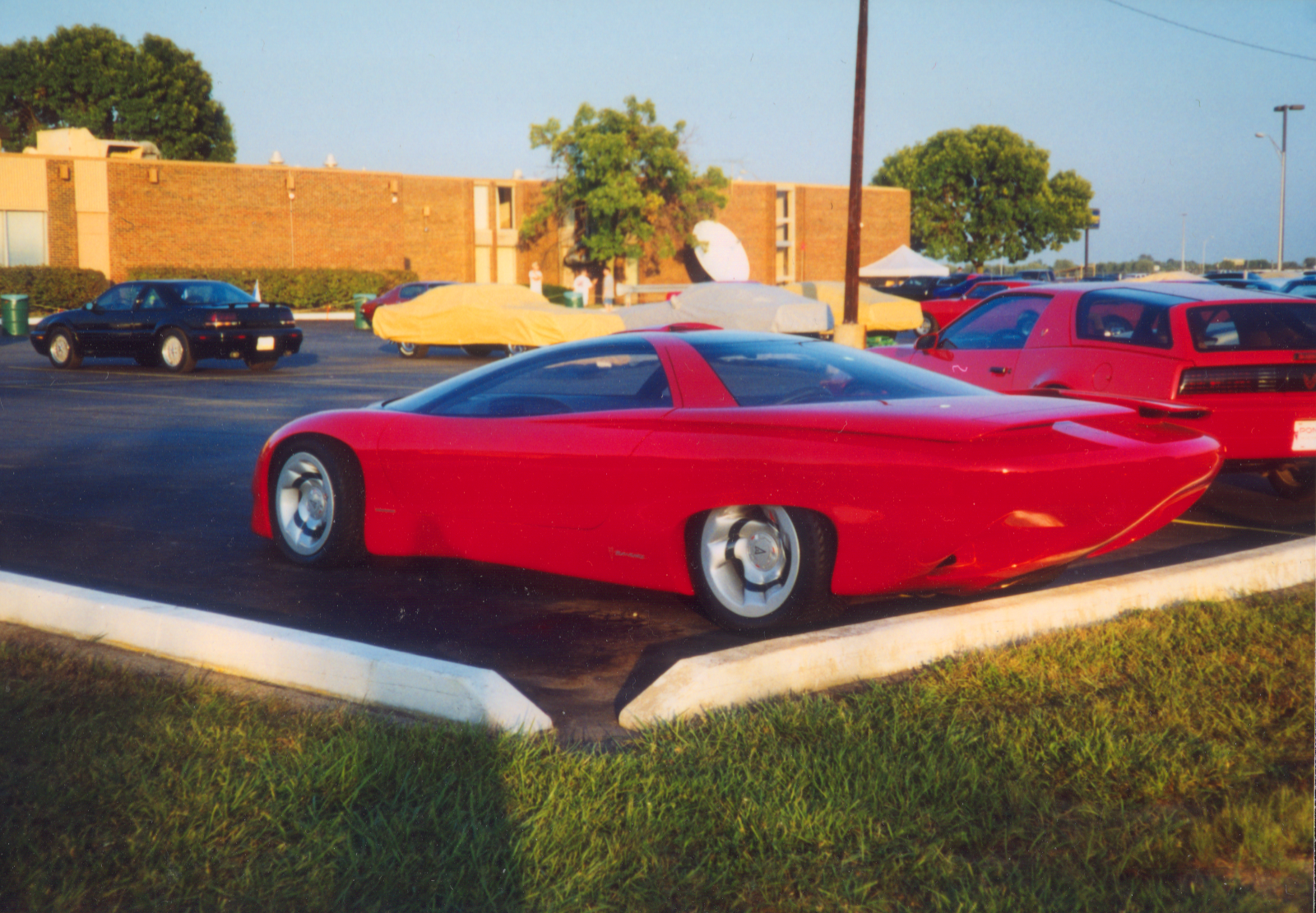
2. **Pontiac Banshee**Ah, Pontiac, a marque synonymous with performance and, quite often, a penchant for audacious and boundary-pushing design. The name “Banshee” itself conjures images of raw speed and untamed power, first gracing a front-engine coupe in the early 1960s under the discerning eye of John DeLorean. While that initial project was, much to his chagrin, controversially shelved by the top brass at General Motors – fearing it would unfairly diminish the Corvette’s esteemed position in the market – the evocative name lived on, adorning a succession of intriguing and ever-more futuristic concept cars, each pushing the design envelope further.
Among these, none, perhaps, was more aggressively futuristic and brimming with cutting-edge technology than the Pontiac Banshee IV, which made its electrifying debut at the 1988 Chicago Auto Show. This wasn’t merely a car; it was a bold statement, a sleek fiberglass supercar that captivated attendees with its razor-sharp lines and promises of tomorrow. Beneath its stunning skin lay a robust 4.0L 32-valve V8 engine, producing a then-respectable 230 horsepower. However, while its sleek body was certainly eye-catching, the true marvel, and the focus of our admiration today, lay deep within its cabin.
This is where the Banshee IV truly excelled, offering a generous, perhaps even overwhelmingly abundant, helping of buttons meticulously designed to control every accessory and function imaginable. From the nuanced climate control settings to the impressively movable steering column, the designers’ primary aim was clear: to minimize driver distraction by placing a staggering total of 20 buttons directly on the steering wheel itself. This level of integrated functionality was nothing short of revolutionary in 1988, serving as a powerful harbinger of the button-laden, technologically advanced steering wheels we now take for granted in modern vehicles. While never destined for production, its influence on future Pontiac designs was undeniable, showing a commitment to driver-focused innovation.
Read more about: Journey Back to the Future: Ten Classic Jet Age Cars That Defined 1950s Automotive Innovation and Style
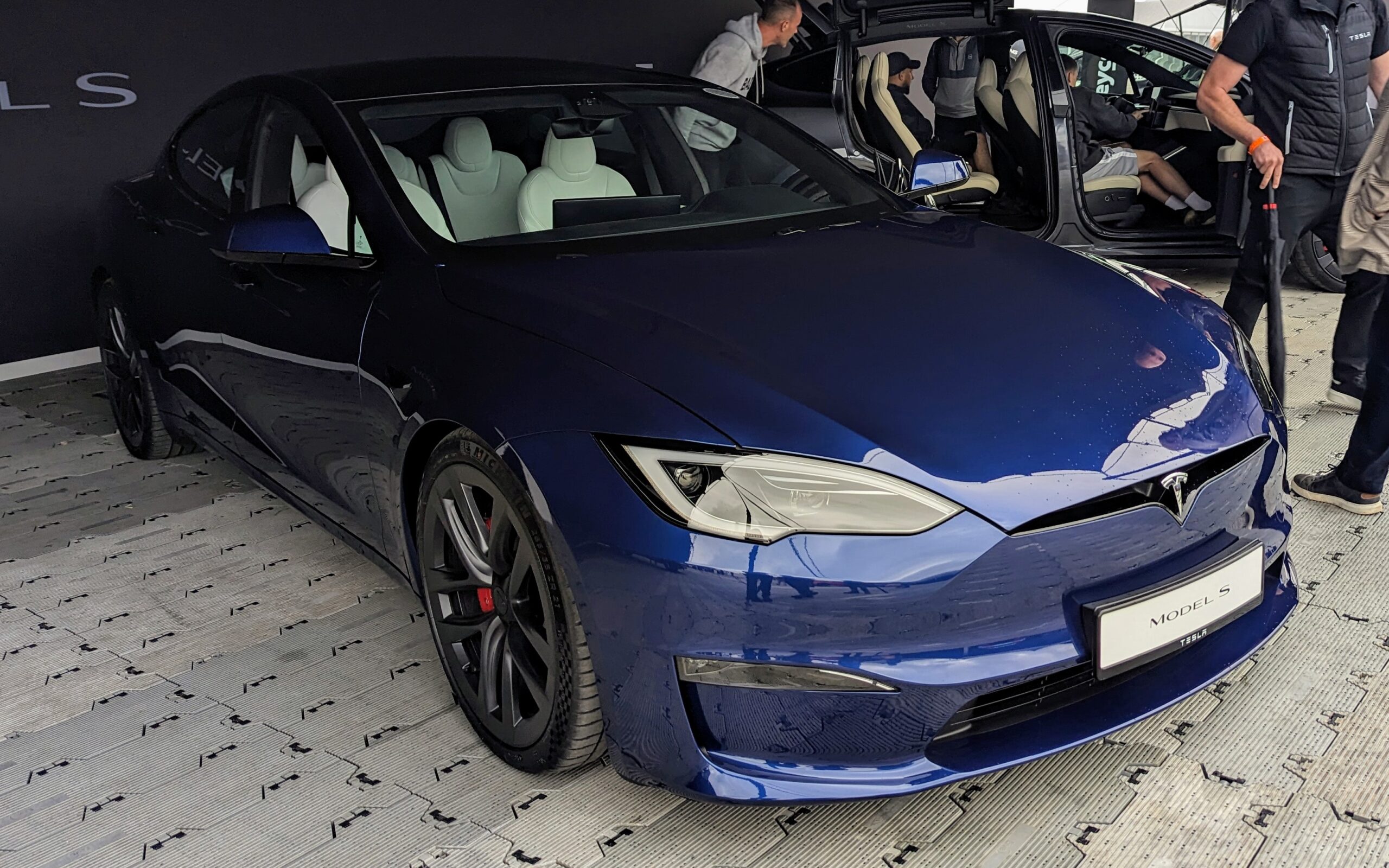
3. **Tesla Model S Plaid**When we embark on discussions about automotive innovation and the art of truly thinking outside the traditional box, one name, perhaps more than any other in recent memory, inevitably springs to mind: Tesla. This isn’t your grandfather’s car company; it’s a dynamic tech startup that burst onto the scene, famously unencumbered by the multiple layers of corporate bureaucracy and legacy thinking that often characterize and sometimes stifle more established, giant manufacturers. This invaluable freedom has, for the most part, consistently yielded positive and groundbreaking developments, introducing features like advanced Autopilot capabilities and the ever-vigilant Sentry Mode.
However, even the most innovative minds, operating within the most agile structures, occasionally stumble upon an idea that, while initially seeming like a stroke of unassailable genius, ultimately fails to achieve the widespread adoption and universal acclaim that the company’s ambitious CEO undoubtedly strives for. The perfect, and perhaps most talked-about, example of this intriguing concept is Tesla’s reimagined “steering wheel.” In reality, and quite definitively, it is not a steering wheel at all in the conventional sense. Instead, it’s a yoke, a control input remarkably similar to what you might encounter in the cockpit of a small aircraft, and it was first boldly offered on the high-performance Tesla Model S Plaid in 2021.
The conceptual idea of having a yoke in this particular, top-tier model does, admittedly, make a certain thematic sense. The “Plaid” model designation itself is a fantastic throwback, a playful nod to the ludicrous speed of a spacecraft in Mel Brooks’ iconic 1987 “Star Wars” parody film, “Spaceballs.” So, whether you enthusiastically fall into the camp of loving this unconventional yoke or find yourself firmly in the camp of disliking it, there is absolutely no denying that it represents an innovative and distinctly non-traditional steering wheel design. One immediate and undeniable benefit of this radical departure from the circular norm is that it creates a completely unobstructed view of the driver’s gauge cluster, freeing up precious visual real estate for crucial driving information. Yet, this design has certainly ignited its fair share of vigorous controversy, with some drivers finding low-speed maneuvers compromised. The debate rages on: is this truly the inevitable way of the future for all cars?
Car Model Information: 2023 Kia Telluride SX Prestige X-Line
Name: Tesla Model S
ModelYears: 2013–present
Alt: A front-three quarter view of a gray Model S
Caption: #2016–2019: First major update
Designer: Franz von Holzhausen
Weight: cvt
Height: cvt
Width: cvt
Length: cvt
Wheelbase: cvt
ElectricRange: cvt
Battery: kWh,lithium-ion battery
Motor: Unbulleted list
Transmission: Reduction drive
Related: Tesla Model X
Layout: Rear-motor, rear-wheel drive,Dual-motor, all-wheel-drive,Tri-motor, all-wheel-drive layout
BodyStyle: liftback,sedan (automobile)
Class: Full-size car
Assembly: Unbulleted list
Production: June 2012 – present
Manufacturer: Tesla, Inc.
Sp: us
Chassis: Unibody
Categories: 2020s cars, All-wheel-drive vehicles, All Wikipedia articles written in American English, All articles containing potentially dated statements, Articles containing potentially dated statements from 2025
Summary: The Tesla Model S is a battery-electric, four-door full-size car produced by the American automaker Tesla since 2012. The automaker’s second vehicle and longest-produced model, the Model S has been described as one of the most influential electric cars in the industry. Car and Driver named it one of the best cars of the year in 2015 and 2016. Its various accolades include the Motor Trend Car of the Year Award in 2013.
Tesla started developing the Model S around 2007 under the codename WhiteStar. Initially, Henrik Fisker was appointed as the lead designer for the WhiteStar project; after a dispute with Elon Musk, Tesla’s CEO, Fisker was replaced by Franz von Holzhausen. By 2008, von Holzhausen had designed what would become the production Model S’s exterior. Tesla unveiled a prototype of the vehicle in March 2009 in Hawthorne, California. In 2010, Tesla acquired a facility in Fremont, California, to produce the Model S, which was previously owned by General Motors and Toyota. Series manufacture of the car officially began at the Tesla Fremont Factory in June 2012. Tesla carried out the final assembly for European markets at its facilities in Tilburg, Netherlands, between 2013 and 2021.
The Model S typically uses either one or initially two alternating current induction motors; since 2019, dual-motor versions have used a permanent magnet motor in the front, though the high-performance Model S Plaid’s three motors are permanent magnet units by default. Constructed mostly of aluminum, the Model S shares 30 percent of its components with the Model X—a crossover SUV that was introduced in 2015. The Model S has undergone several updates during its production, the most prominent ones occurring in 2016 and 2021. These updates have usually included modifications to the motor, such as changes to power or torque, revised exterior elements, and refreshed interior features. One such change included the 2015 introduction of Tesla Autopilot—a partial vehicle automation advanced driver-assistance system.
In 2015, the Model S was the world’s best-selling plug-in electric vehicle. In 2012, it was included on Time’s list of the Best Inventions of the Year, and the magazine later included it on its list of the 10 Best Gadgets of the 2010s in 2019. In 2014, The Daily Telegraph described the Model S as a “car that changed the world”. Road & Track argued that, with the introduction of the Plaid and features such as the yoke steering wheel, Tesla managed to turn the Model S into “perhaps one of the worst [cars in the world]”.
Get more information about: Tesla Model S
Buying a high-performing used car >>>
Brand: Tesla Model: Model S Plaid
Price: $41,997 Mileage: 28,716 mi.
Read more about: From Gridiron Gladiator to Global Icon: Decoding Travis Kelce’s Viral Moments, Epic Rides, and Fairytale Engagement Frenzy
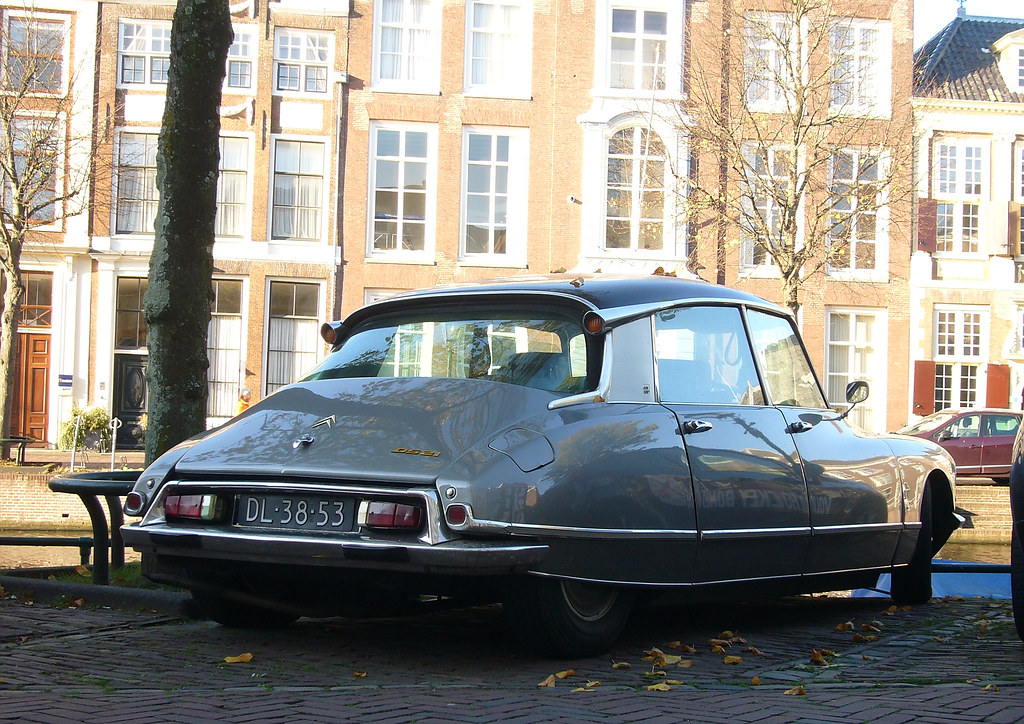
4. **Citroën DS**Among the myriad products that triumphantly emerged from the crucible of Europe after the devastating ravages of World War II, the Citroën DS stands as an undeniable shining achievement, a veritable monument to French ingenuity, daring design, and engineering brilliance. While many of its features and individual components were, to say the least, extraordinarily unorthodox for its time, they somehow coalesced with remarkable harmony to form something so totally unique, so wonderfully avant-garde, that it could only have originated from one truly singular place. It was a vehicle that defied conventions, captivating the world with its distinct character and groundbreaking technology.
The biggest highlight, and perhaps the most iconic feature, of the DS was its truly innovative high-pressure hydraulic system. This marvel of engineering utilized a sophisticated combination of pneumatic and hydraulic components to form a suspension system that, quite simply, provided what was then considered the smoothest, most serene ride on the planet. Imagine floating effortlessly over imperfections in the road, a sensation of gliding rather than driving. Beyond this legendary suspension, the very same ingenious hydraulics also operated the clutch, the advanced power steering, and the powerful brakes, creating an integrated system that was years ahead of its time.
And then, amid all this hydraulic wizardry and futuristic functionality, another quirky but utterly great feature demanded and still demands our attention: the steering wheel itself. Now, let’s be clear, this wasn’t a wheel bristling with a multitude of buttons or burdened with complex electronic functions – after all, we are talking about a car from the enlightened 1950s! However, its design was utterly revolutionary in its elegant simplicity and unique presentation. The wheel was suspended by a single, slender spoke, which rose gracefully and curved immediately outwards from the steering column, holding the wheel in a way that created the distinct impression of it almost floating weightlessly in front of the instrument cluster. This provided an absolutely clear and unobstructed view of the car’s gauges, ensuring drivers could always access vital information.
Beyond its striking aesthetics, this distinctive single-spoke design also offered a profoundly practical and safety-conscious benefit. In an era where automotive safety was still in its nascent stages, the single spoke was specifically engineered to collapse in the unfortunate event of a collision, helping to mitigate potential injuries to the driver. It was a design choice that was undoubtedly a bit weird, a touch quirky, but it’s precisely these characteristics that made it so wonderfully iconic and endearing. The Citroën DS steering wheel stands as a powerful testament to the idea that sometimes, the most elegant, effective, and even safest solutions are also the most unconventional, a true celebration of visionary design ingenuity.
Read more about: Unveiling the Future: Life Aboard the USS Gerald R. Ford, the World’s Largest Aircraft Carrier

5. **Pontiac Pursuit**Pontiac, it seems, was truly a hotbed of cutting-edge ideas and daring concepts during the vibrant automotive landscape of the 1980s, consistently pushing the aesthetic and technological envelope. Some of these intriguing designs, often to the delight of enthusiasts, eventually found their way, in some form, into production models. The 1987 Pontiac Pursuit, however, was emphatically not one of those. This concept car looked less like a conventional road-going vehicle and more like something that had been ripped straight from the grittier, dystopian set of a classic sci-fi blockbuster – one might easily imagine it cruising through the worlds of “Robocop” or “Total Recall.” Its bulbous, almost pod-like shape boldly screamed “cyborg world of the future,” a daring, albeit perhaps ultimately misguided, prediction of automotive aesthetics.
In a charmingly retro-futuristic paradox, the Pursuit’s designers didn’t quite foresee the eventual ubiquity of cheap, versatile, and high-resolution screens that would eventually come to dominate our modern dashboards. Instead, they boldly envisioned a future brimming with the maximum possible number of physical buttons, a stark and fascinating contrast to the minimalist, screen-centric interfaces we often encounter today. Yet, amidst this veritable explosion of buttons, lay some truly advanced and forward-thinking engineering, most notably an innovative drive-by-wire steering system that uniquely incorporated four-wheel steering. This system was engineered to be incredibly sensitive, offering precise control, and here’s the truly revolutionary kicker: the primary steering input wasn’t a traditional circular wheel at all. It was a distinct yoke, strikingly reminiscent of what many of us might now recognize as a sophisticated gamepad, specifically designed to rotate a mere 180 degrees left or right, a testament to its advanced, electronic control.
This highly unconventional yoke was not merely a tool for steering the vehicle; it was a multi-functional command center. It was meticulously outfitted with an intricate array of buttons, including two distinct d-pads, which were specifically used for the intuitive navigation of the car’s sophisticated onboard computer system. And in this particular aspect, the designers truly hit the nail on the head, demonstrating remarkable prescience about the future – the fundamental concept of an integrated, highly interactive onboard computer system becoming central to the driving experience. As far as unique and innovative steering mechanisms go, this one was undoubtedly pretty cool and, within its futuristic context, appeared to be remarkably useful and highly functional. It even served as a compelling harbinger, foreshadowing some of the sophisticated components and intuitive interfaces that we now seamlessly integrate into our daily lives and take for granted in contemporary vehicles.
Read more about: Beyond the Badge: Uncovering the Hidden Flaws in 14 Fan-Favorite Vehicle Models

6. **Pagani Huayra**When we talk about hand-built supercars, where the lines between engineering marvel and pure artistry blur, few names resonate with the same reverence and passion as Pagani. These aren’t just cars; they are meticulously crafted machines, sprung from the visionary mind of former Lamborghini designer Horacio Pagani himself. Every single detail receives meticulous attention, ensuring both engineering brilliance and stylistic flair stand on equal footing. The fruits of this unwavering dedication, models like the iconic Zonda and the breathtaking Huayra, have swiftly ascended to become some of the most lusted-after supercars ever conceived, with recent examples commanding retail prices that comfortably exceed the eye-watering $1 million mark.
So, what does that incredible sum of money get you? Well, you’re not just buying a mode of transport; you’re acquiring a symphony of power and precision. Beneath that sculpted, impossibly sleek exterior lies an AMG-built V12 engine, a powerhouse capable of churning out a spine-tingling 800 or more horsepower. The entire structure is a masterclass in lightweight construction, built from an abundance of carbon fiber, all aggressively tuned and optimized for nothing short of blistering speed. Beyond raw performance, the styling celebrates Italian flair, an exhibition of elegance and opulent luxury rarely matched.
Now, let’s turn our attention to the steering wheel, which, in a Pagani Huayra, isn’t overtly complicated or peculiar in its primary function, but rather an exquisitely elegant piece of hardware. Its hand positions are lovingly swathed in fine leather, while the center cap adds another touch of bespoke luxury. The rest of the wheel is a sophisticated composition of carbon fiber and aluminum, artfully integrated with a few subtle buttons and knobs that provide discreet functionality. The bottom is thoughtfully squared off for driver comfort, but the overall shape remains conventionally beautiful. The true highlight isn’t pioneering functions, but its profound aesthetic appeal and timeless beauty. Though modern (it includes an airbag), its design gracefully harks back to an era where bespoke luxury, exotic materials, and unparalleled beauty were paramount.
Car Model Information: 2014 Pagani Huayra Coupe
Name: Pagani Huayra
Caption: Pagani Huayra Roadster
Manufacturer: Pagani Automobili
Production: 2011–2018
(Huayra; 100 units),2017–2019
(Huayra BC; 29 units),2017–2020
(Huayra Roadster; 100 units),2019–2022
(Huayra Roadster BC; 40 units),2019–2021
(Imola; 5 units),2020–2022
(Huayra Tricolore; 3 units),2021–present
(Huayra R; 30 units),2022
(Huayra Codalunga; 5 units),2023–present
(Imola Roadster; 8 units),2025–
(Huayra R Evo),(number of units does not include prototypes)
Assembly: San Cesario sul Panaro
Designer: Horacio Pagani (auto executive)
Class: Sports car
BodyStyle: coupe
Related: Pagani Zonda R
Layout: Rear mid-engine, rear-wheel-drive layout
Engine: ubl
Abbr: on
Powerout: {{convert,740,PS,kW hp,abbr=on,0
Transmission: Xtrac Limited,Xtrac Limited,Sequential manual transmission
Wheelbase: Convert
Length: Convert
Width: Convert
Height: Convert
Weight: {{Convert,1350,kg,0,abbr=on
Predecessor: Pagani Zonda
Successor: Pagani Utopia
Doors: Gull-wing doors
Categories: All Wikipedia articles written in British English, All articles needing additional references, All articles with unsourced statements, Articles needing additional references from February 2023, Articles with short description
Summary: The Pagani Huayra (WHY-rah, Italian pronunciation: [ˈwaira]) is a mid-engine sports car produced by Italian sports car manufacturer Pagani, superseding the company’s previous offering, the Zonda. It is named after Wayra Tata, the Quechua (indigenous South American) wind god. The Huayra was named “The Hypercar of the Year 2012” by Top Gear magazine. On 11 February 2015 it was reported that the Pagani Huayra had been sold out. The Huayra was limited to just 100 units as part of Pagani’s agreement with engine supplier Mercedes-AMG.
The Pagani Huayra was officially debuted online with several pictures in a press release on 25 January 2011. The official world debut was at the headquarters of Pirelli in Milan in February 2011.
Get more information about: Pagani Huayra
Buying a high-performing used car >>>
Brand: Pagani Model: Huayra
Price: Not Priced Mileage: 9,873 mi.
Read more about: The Ultimate Flex: Exploring the World’s Most Expensive Celebrity Car Collections

7. **Mercedes-Benz Vision One-Eleven**Concept cars often dance between fantastical dreams and tangible reality. Some arrive with no real hope or even a concrete plan of ever transitioning into a production vehicle, destined to remain beautiful, static sculptures. Others, however, burst onto the scene brimming with such undeniable promise that, with a few judicious tweaks, you can almost envision them rolling off an assembly line. Then, enigmatic concepts like the Mercedes-Benz Vision One-Eleven prototype defy easy categorization, leaving us to ponder their ultimate fate.
Regardless of whether this stunning creation ever morphs into a regular production vehicle – and frankly, we’re rather hoping it does – it stands as an undeniably cool electric concept, absolutely brimming with novel features and incredibly advanced technology. It’s a worthy successor and homage to the innovative 1970s Mercedes-Benz C111 concept, catapulting its forward-thinking ideas into the modern era with technological vengeance. At its heart, it incorporates an electric drivetrain that’s absolutely at the cutting-edge of EV technology, created with AMG, all of which is nestled within a sleek, rocket-like exterior, complete with those magnificent, attention-grabbing gullwing doors and a captivating glass canopy.
Step inside, and you’re greeted by an interior that embraces a highly minimalist philosophy, eschewing an abundance of physical hardware for a clean, uncluttered aesthetic. Mercedes-Benz confidently states that the car is equipped with an augmented reality interface, a virtual playground designed to create truly unlimited possibilities in interior design and function, pushing the boundaries of what a cockpit can be. But for all its futuristic wizardry, the undeniable focal point, the heart of the driver’s experience, is its beautiful steering wheel. It’s elegantly stitched with a vibrant orange leather, a striking visual echo of the car’s exterior paintwork, creating a seamless flow of design language from outside in.
This isn’t your average circular wheel; it’s shaped in an unusually rounded rectangular fashion, a subtle yet distinctive departure from the norm that immediately catches the eye. Within its sophisticated confines, you’ll find a few large and boldly designed buttons and dials, strategically placed to augment a floating touchscreen display, ensuring that everything crucial remains at fingertip length. While not extraordinary in functional complexity, its exquisite and exotic form speaks volumes. We can only fervently hope that our next car will be so equipped with something so utterly attractive and forward-thinking.
Car Model Information: 2023 Kia Telluride SX Prestige X-Line
Categories: All articles with unsourced statements, Articles with short description, Articles with unsourced statements from December 2024, CS1: long volume value, CS1 German-language sources (de)
Summary: The following is a list of vehicles produced by Mercedes-Benz Group (formerly Daimler-Benz) and their successors, ordered by year of introduction.
Get more information about: List of Mercedes-Benz vehicles
Buying a high-performing used car >>>
Brand: Mercedes-Benz Model: Vision One-Eleven
Price: $41,997 Mileage: 28,716 mi.
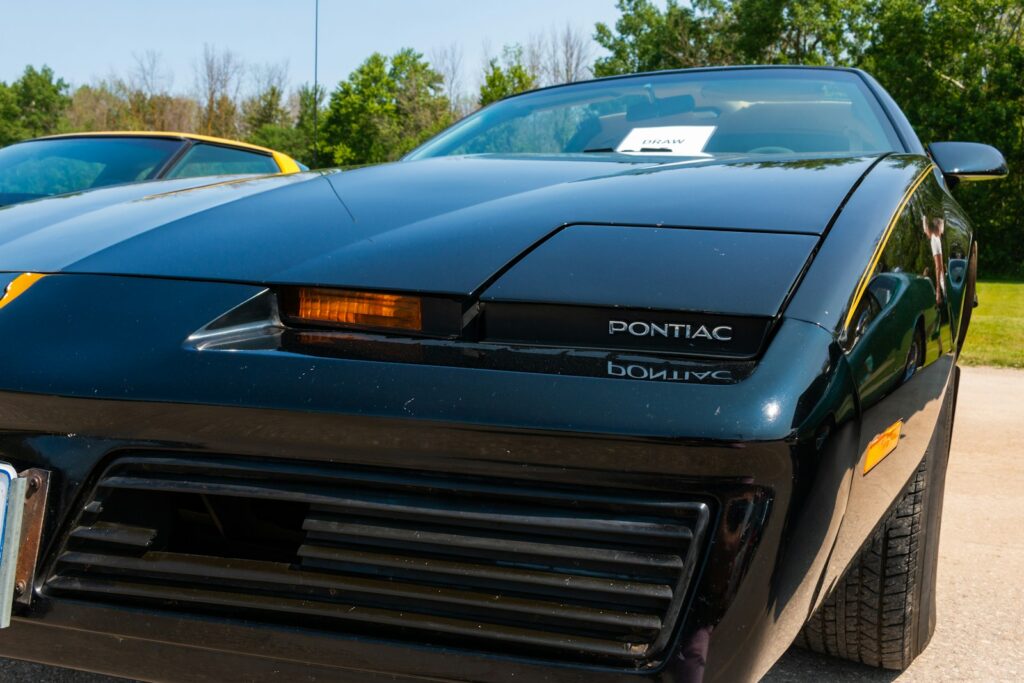
8. **Pontiac Trans Sport**Ah, the 1990s! Many who navigated the 90s automotive landscape recall a trio of GM vans. These minivans are often remembered, not for excellence, but their unfortunate aesthetic – often likened to a handheld vacuum cleaner. While these unremarkable vehicles are, quite frankly, largely and rightfully forgotten by the annals of automotive history, they did, perhaps surprisingly, spring up from a forward-thinking prototype that truly deserves to be remembered: the Pontiac Trans Sport concept. It’s a classic automotive tale: a concept car unveils immense promise, only for the production model to arrive as something dramatically different and often disappointing. This narrative, alas, perfectly encapsulates the journey of the Trans Sport.
The concept version, which made its grand debut in 1986, looked less like a conventional van and more like a sleek, futuristic transport capsule, designed to cocoon its passengers in a world of tomorrow. It boasted a sleek and boldly sloped exterior, an aerodynamic marvel, punctuated by a couple of giant – and unbelievably cool – gullwing van doors. It was a vision of family transport reimagined. Sadly, almost none of that cool factor or audacious design spirit made it to dealer lots, a lamentable transformation.
However, let’s zoom in on a particularly interesting artifact of this forgotten future: its steering wheel. This wasn’t just any wheel; it looked directly modeled after the groundbreaking Maserati Boomerang concept wheel, a testament to its forward-thinking inspiration. Composed of four distinct spokes, its center was completely covered by a fascinating array of controls, designed for various functions of the car. The vehicle’s driver interface was a sophisticated CRT screen display, elegantly nestled within the instrument cluster, and drivers would interact with this digital realm using the myriad buttons strategically placed in the very center of the steering wheel. It was a genuine command center, putting information and control directly at the driver’s fingertips.
Adding another layer of future-tech wonder, the car also fitted an onboard computer on the passenger side, complete with a pop-up screen and fully functional keyboard. It was a desktop computer on wheels, a truly astonishing feature for its time! Sadly, the production version lost all these ambitious ideas, becoming yet another poignant example of a future concept that missed the mark but, in its original form, left us with an intriguing artifact to gawk at and appreciate as a brave glimpse into what could have been. What a difference a few bold choices could have made to the minivan segment!
Car Model Information: 2023 Kia Telluride SX Prestige X-Line
Name: Pontiac Trans Sport
Manufacturer: Pontiac (automobile)
Production: 1989–1998
ModelYears: 1990–1999
Predecessor: Pontiac Safari
Successor: Pontiac Montana
Class: Minivan
Layout: Front-engine, front-wheel-drive layout
Platform: GM U platform
Related: Chevrolet Lumina APV,Oldsmobile Silhouette
Caption: First-generation Pontiac Trans Sport SE (post-facelift)
Categories: 1990s cars, All articles with unsourced statements, Articles with short description, Articles with unsourced statements from May 2024, CS1 German-language sources (de)
Summary: The Pontiac Trans Sport is a minivan that was marketed by Pontiac from the 1990 to 1999 model years. The first minivan marketed by the division, the Trans Sport marked the beginning of a wider transition of moving away from sedans and station wagons as family-oriented vehicles. Marketed between the Chevrolet Lumina APV (the first front-wheel drive Chevrolet minivan) and the Oldsmobile Silhouette (like the Trans Sport, the first minivan by the brand) took its name from a similar 1986 concept vehicle.
The first-generation Trans Sport took on a “Dustbuster” nickname for its controversial front body styling (with a long front overhang); the second-generation version, much like several other model lines, marked an industry shift towards adopting a form factor similar to that used by the Chrysler minivans. Officially designated a U-platform vehicle, both generations of the Trans Sport share mechanical commonality and shared componentry with the W platform Pontiac Grand Prix.
The Trans Sport was initially assembled at North Tarrytown Assembly (Tarrytown/Sleepy Hollow, New York), shifting production to Doraville Assembly (Doraville, Georgia) for its second generation. For the 1998 model year, Pontiac renamed the Trans Sport the Pontiac Montana, after an exterior trim package introduced in 1997.
Get more information about: Pontiac Trans Sport
Buying a high-performing used car >>>
Brand: Pontiac Model: Trans Sport
Price: $41,997 Mileage: 28,716 mi.
Read more about: Beyond the Badge: Uncovering the Hidden Flaws in 14 Fan-Favorite Vehicle Models

9. **Lexus RZ450e**Ah, the future of motoring is electric, and Lexus has emphatically thrown its hat into the ring with its very first fully electric EV, the RZ450e, already available from Lexus dealers. This isn’t just another electric car; it’s a meticulously crafted blend of traditional automotive elements, imbued with many innovative and cutting-edge features, wrapped in the reliable luxury and meticulous attention to detail we expect from the revered brand. While the exterior styling is perhaps a touch more bold and angular than previous, more sedate Lexus models, the interior largely remains a bastion of reserved elegance, quite typical of other current Lexus offerings. Most aspects resonate with the familiar Lexus experience, with EV power being the primary difference.
Yet, for a brand known for its more conventional approach, Lexus has chosen to offer a truly unique and rather daring steering input for the RZ450e – a yoke. This isn’t just an aesthetic choice; it’s a profound engineering statement. According to Lexus, this revolutionary yoke has no physical connection whatsoever with the traditional steering rack. Instead, every input from the driver instantaneously converts into precise electrical signals instructing the car how much to turn. This digital connection unlocks some truly impressive capabilities, allowing, for instance, a complete U-turn to be accomplished without the need for a full, laborious turn of the yoke. It’s a game-changer for low-speed maneuvering, though interestingly, the input is designed to be less sensitive at higher speeds, ensuring stability and control.
This ingenious design means you theoretically never need to remove your hands from the yoke, no matter how sharp or intricate a turn you need to execute, enhancing both comfort and control. Overall, the design of the Lexus yoke is, to put it mildly, pretty cool. It certainly appears to function remarkably well, offering a seamless and intuitive connection between driver and vehicle. However, the question remains: will this radical departure see widespread adoption? It just might be that, despite its undeniable merits and technological sophistication, people are not yet entirely ready for this kind of fundamental change in their driving experience. Only time will tell if this bold move carves out a new path for steering interfaces.
Read more about: The Ultimate 2025 EV Showdown: Ranking America’s Best Affordable Electric Cars
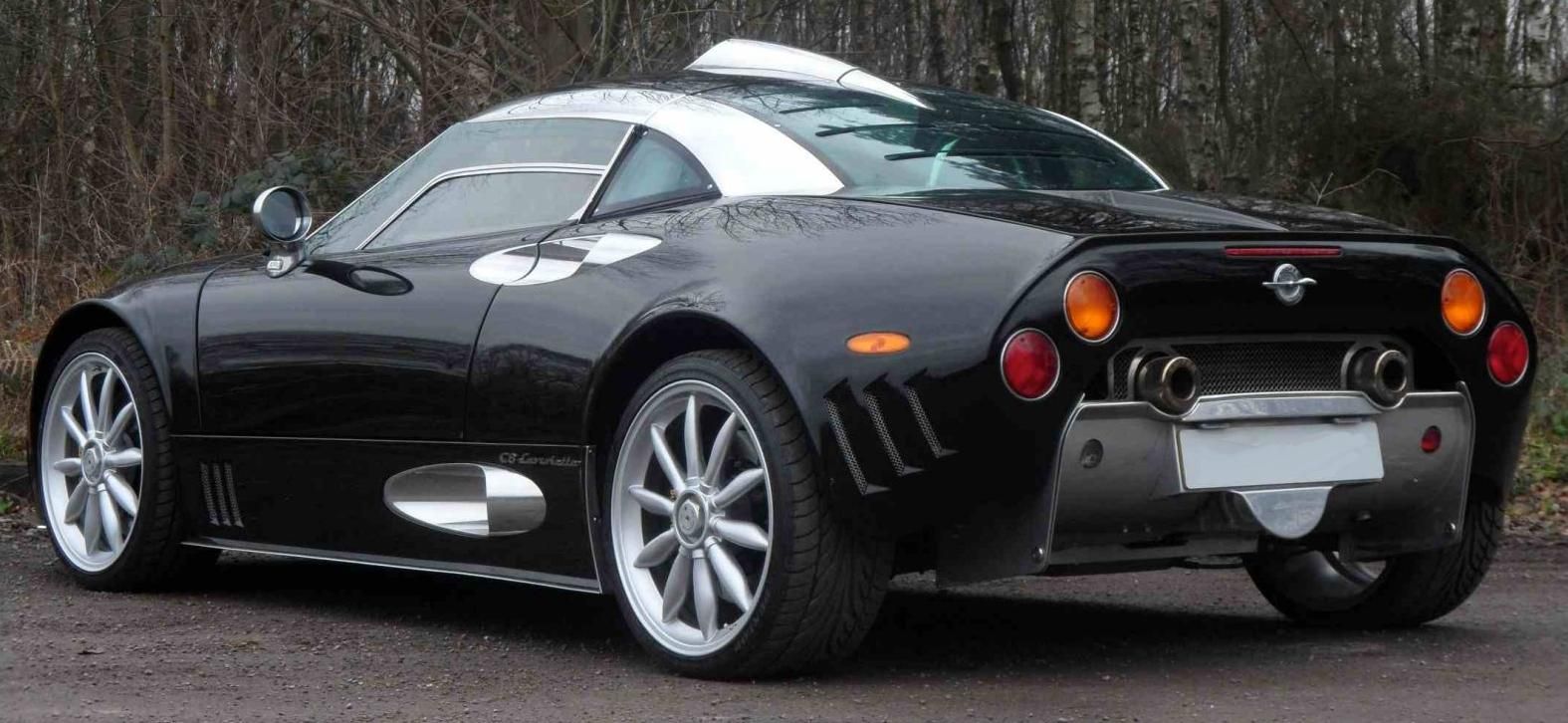
10. **Spyker C8**In a world of mass production, Dutch automaker Spyker once stood as a beacon of artisanal craftsmanship, meticulously hand-building exquisite mechanical creations. While they performed well, Spyker cars were more than brute power; they were profound statements of style, artistry, and exclusivity. This ethos is vividly evident the moment you examine any of the few cars they built, both inside and out. The interiors were a symphony of luxury, featuring sumptuous quilted leather stitched throughout, gleaming aluminum switchgear, rich wood panels, a machine-finished dashboard that felt like a tactile masterpiece, intricate detailed trim flourishes, and perhaps most famously, a trick exposed shifter linkage proudly displayed in the center console. Few exposed plastics can be found on these magnificent machines, and their highly stylized exteriors displayed a fashionable design like no other.
Spyker’s story is a fascinating one, with roots stretching back to the 19th century when Hendrik-Jan and Jacobus Spijker began building elegant horse-drawn coaches. Their ambitions soared, expanding into pioneering automobile and aircraft manufacturing. While the original company went out of business after World War I, it was revived in 1999 to build exclusive luxury supercars using Audi drivetrains. Crucially, with this revival, Spyker’s rich aircraft heritage played an integral and utterly captivating role in its design philosophy, imbuing their modern creations with a sense of aeronautical grace and power. You can see many design elements reminiscent of the early days of aviation.
And nowhere is this aviation inspiration more evident than in the C8’s steering wheel itself. It’s a masterwork, exquisitely crafted to resemble a four-blade propeller, a direct nod to the brand’s winged past. Even the car’s distinctive 10-spoke wheels ingeniously incorporate that very same propeller blade design, creating a cohesive and compelling visual theme. The wheel itself is a triumph of materials, fashioned from polished metal that catches the light beautifully, complemented by a luxurious leather-wrapped rim that offers a superb grip. It lacks an airbag. This was possible as low-volume manufacturers could get exemptions at the time, making it possible to create this less safe but elegant and beautiful interior design feature.
While the Spyker C8 steering wheel doesn’t boast any exotic functions, nor is it a cutting-edge design bristling with digital wizardry, its profound homage to aviation history and its sheer, exclusive craftsmanship elevate it far beyond the ordinary. It is one of the coolest features found on any car, a true testament to heritage and unparalleled style, a glorious fusion of land-bound performance and sky-bound dreams.
Read more about: Gone But Not Forgotten: 14 Beloved Cars That Vanished Unexpectedly from Production
Our journey through car history’s coolest steering wheels has been exhilarating, a thrilling dive into designers who dared to defy convention. From the integrated command centers of futuristic concepts to the minimalist elegance of safety-first designs, and from the controversial yokes pushing ergonomic boundaries to the artisanal tributes of aviation heritage, these steering wheels prove that the interface between driver and machine is far more than just a functional necessity. They are statements of ambition, experiments in ingenuity, and sometimes, pure works of art. They remind us that even taken-for-granted components can be reimagined, refined, and made spectacular, driving innovation forward in unexpected ways. Here’s to the steering wheels that spun us in a whole new direction, making every drive an experience not just of travel, but of wonder.



